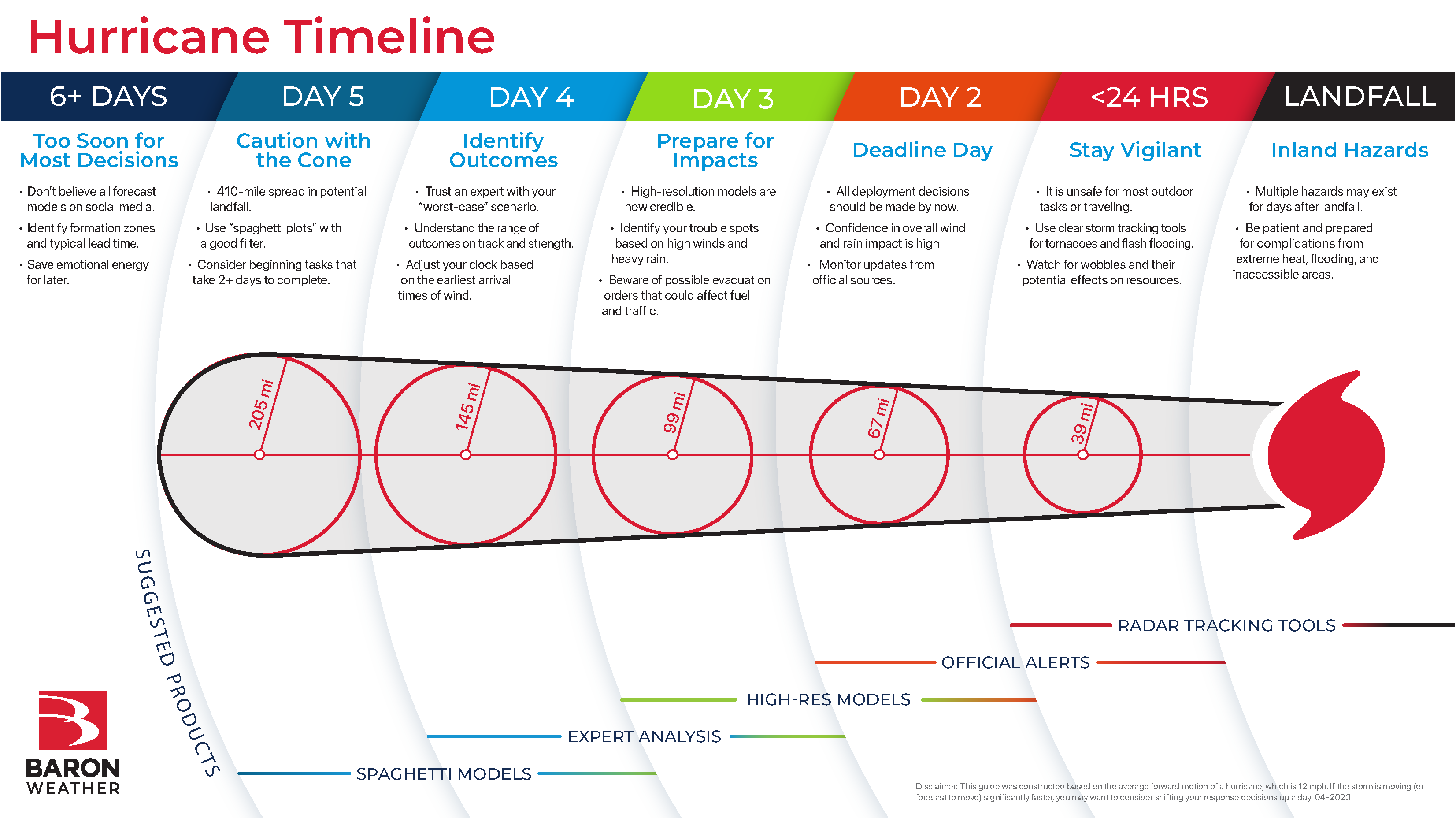The 2023 Atlantic Hurricane Season is officially less than a month away.
The first week of May is dubbed "Hurricane Awareness Week," a collaborative effort between the National Hurricane Center, National Weather Service, emergency managers, and local media to encourage preparation and mitigation efforts ahead of the approaching season.
This is also a good time to review your business continuity plans, which should include smarter weather data and knowledge of how to use it.
Whether you want to prepare your home or your business for hurricanes, we've got you covered. You can use the links below to navigate through tips for your family or employees quickly.
Expert Advice to Save for Later
Making the right decision at the wrong time can be a costly mistake. Buying the right weather data just isn't enough. You must know how and when to use it. And we have a cheat sheet for that.
The insights in our decision-makers hurricane guide shared below will be useful when you start to see projections for a hurricane or tropical storm that might affect your business or assets.

Download the Guide Here
This guide can help you overcome the hurricane “information overload” problem often associated with model hype, spaghetti plots, and the infamous cone of uncertainty.
Smarter Data Can Be a Shortcut
Hurricanes are complex and dangerous. But assessing your risk from one doesn't have to be difficult.
Even a weaker storm can bring operations to a halt. And it will likely be only a few weeks before the first tropical storm of the year threatens. See how smarter weather data can make assessing risks from flooding and tornadoes much easier.
It doesn’t take a hurricane to cause major flooding or tornadoes. Clarity matters when responding to the potential dangers of a tropical storm too.
Prepare Regardless of the Seasonal Forecast
Early projects on the 2023 hurricane season are out. And while it may not be as active as in previous years, it only takes one bad storm to put you out of business or blow your claims budget.
Research shows that hurricane costs are unrelated to how many storms form in any given year. We've shared some insight on the numbers and why they should not be relied on for preparation plans.
While preseason hurricane forecasts can provide valuable high-level insights, there are many pitfalls to relying on them for critical business decisions.
Your Employee's Safety is Critical
Your business hurricane plan will fail if the people responsible for executing it are unprepared. Encouraging personal preparation for employees in hurricane-prone areas is key to pulling off a successful business plan. And if you want to help them build their hurricane plan, you can swipe through the resources below.
The logistics of loss avoidance, mitigation, and response are not easy. Tracking a cone of uncertainty and waiting on a warning often doesn’t cut it. Investments in weather monitoring tools such as historical analysis of weather perils or near-term forecasts can enable you to accurately track a storm’s growth or decay closer to landfall. And knowing when to pull the trigger on a response requires precise data, actionable insights, and expert analysis.
